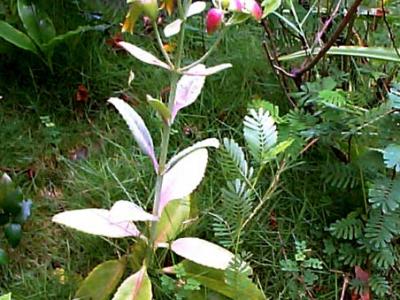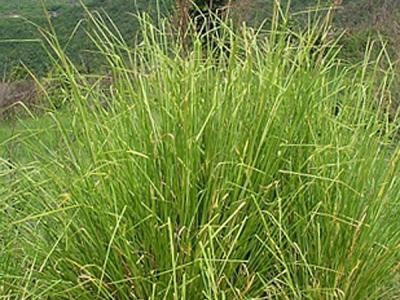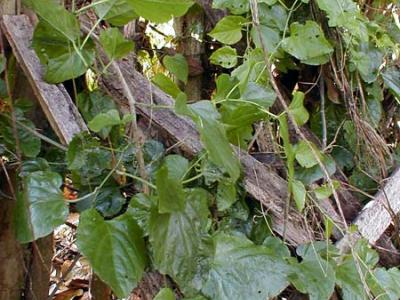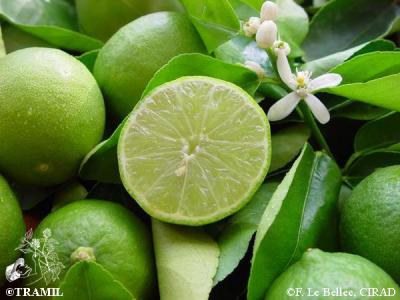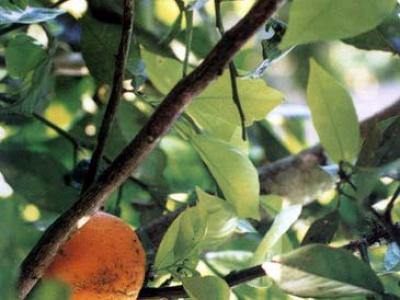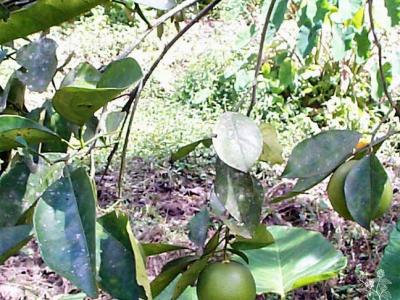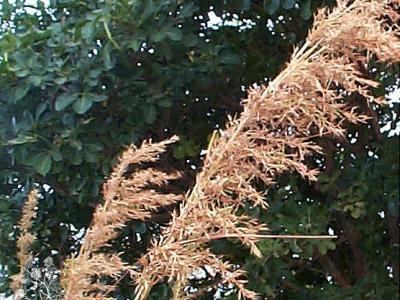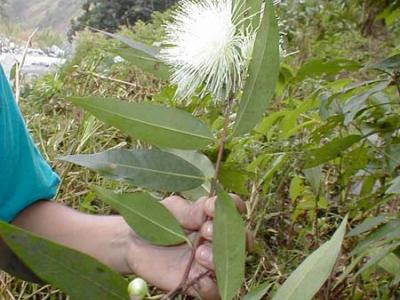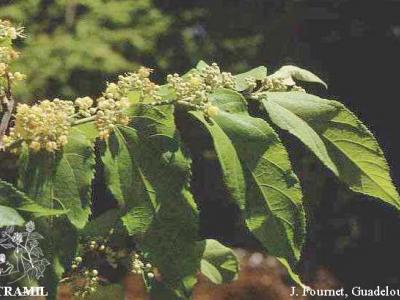(In territories with significant traditional TRAMIL use)
Dominican Republic:
- bruja
Haiti:
- fey choche
- lou gawou
Guatemala:
- hoja del aire
Honduras:
- hoja del aire
Colombia:
- leaf of life
- tree of life
Costa Rica:
- leaf of life
Martinique:
- zèb maltèt
leaf, decoction, orally6
The use as an amulet against vomiting is a traditional cultural use and is not classified in the TRAMIL program.
According to published and other information:
Use for cough is categorized as REC, based on the significant traditional use documented in the TRAMIL surveys, toxicity studies and available published scientific information.
Uses for headache and cold are categorized as REC, based on the significant traditional use documented in the TRAMIL surveys, validation, toxicity studies and available published scientific information.
Should there be a notable worsening of the patient’s condition, or should the cold last more than 2 days, seek medical attention.
Not for use during pregnancy, during lactation or in children.
For topical use for headache and oral use for cold and cough:
There is no available information establishing a means of preparation and dosage other than that referred to by traditional use.
1 WENIGER B, 1987-88
Encuesta TRAMIL. enda-caribe, Santo Domingo, Rep. Dominicana.
2 GIRÓN L, 1988
Encuesta TRAMIL (Costa atlántica). Centro Mesoamericano de Tecnología CEMAT, Guatemala, Guatemala.
3 LONGUEFOSSE JL, NOSSIN E, 1990-95
Enquête TRAMIL. Association pour la valorisation des plantes médicinales de la Caraïbe AVPMC, Fort de France, Martinique.
4 LAGOS-WITTE S, 1988-89, 1996
Encuesta TRAMIL. Laboratorio de Histología Vegetal y Etnobotánica, Departamento de Biología, Universidad Nacional Autónoma de Honduras UNAH, Tegucigalpa, Honduras.
5 BOULOGNE I, 2009
Enquête TRAMIL, (Terre-de-Bas et Terre-de-Haut) Les Saintes, UAG, Guadeloupe.
6 OCAMPO R, 1988
Encuesta TRAMIL (Costa atlántica), Instituto de Desarrollo Agrario, Universidad de Costa Rica, San José, Costa Rica.
7 PICKING D, MITCHELL S, DELGODA R, YOUNGER N, 2011
TRAMIL survey. Natural Products Institute, The Biotechnology Centre & Tropical Metabolic Research Institute, University of the West Indies, Mona, Jamaica.
8 PINZON M, 1994
Encuesta TRAMIL (Isla de San Andrés). Laboratorio de Fitofarmacología, Departamento de Farmacología, Facultad de Salud, Universidad del Valle, Cali, Colombia.
9 WENIGER B, ROUZIER M, 1986
Enquête TRAMIL. Service Oecuménique d'Entraide SOE, Port au Prince, Haïti.
10 WENIGER B, SAVARY H, DAGUIHL R, 1984
Tri phytochimique de plantes de la liste TRAMIL. Laboratoire de chimie des substances naturelles, Faculté de Médecine et de Pharmacie, Université d'Etat d'Haïti, Port au Prince, Haïti.
11 GAIND KN, GUPTA RL, 1971
Flavonoid glycosides from Kalanchoe pinnata. Planta Med 20(4):368-373.
12 GAIND KN, GUPTA RL, 1973
Phenolic components from the leaves of Kalanchoe pinnata. Planta Med 23(12):149-153.
13 YAMAGISHI T, YAN X, WU R, MC PHAIL D, MC PHAIL A, LEE K, 1988
Structure and stereochemistry of bryophyllin-A, a novel potent cytotoxic bufadienolide orthoacetate from Bryophyllum pinnatum. Chem Pharm Bull 36(4):1615-1617.
14 YAN XZ, LEE KS, YAMAGISHI T, 1992
Isolation and identification of cytotoxic components from Bryophyllum pinnatum. Shanghai Yike Daxue Xuebao 19(3):206-208.
15 AKIHISA T, KOKKE W, TAMURA T, MATSUMOTO T, 1991
Sterols of Kalanchoe pinnata: first report of the isolation of both C-24 epimers of 24-alkyl-delta-25-sterols from a higher plant. Lipids 26(8):660-665.
16 GAIND KN, GUPTA RL, 1972
Alkanes, alkanols, triterpenes and sterols from Kalanchoe pinnata. Phytochemistry 11(4):1500-1502.
17 SIDDIQUI S, FAIZI S, SIDDIQUI B, SULTANA N, 1989
Triterpenoids and phenanthrenes from leaves of Bryophyllum pinnatum. Phytochemistry 28(9):2433-2438.
18 BULEN WA, VARNER JE, BURRELL RC, 1952
Separation of organic acids from plant tissues. Anal Chem 24:187-190.
19 PAL S, SEN T, CHAUDHURI AK, 1999
Neuropsychopharmacological profile of the methanolic fraction of Bryophyllum pinnatum leaf extract. J Pharm Pharmacol 51(3):313-318.
20 HEMA D, TIDJANI M, BASSENE E, POUSSET JL, GIONO-BARBER H, 1986
African medicinal plants. XXIV. Study of the antiinflammatory activity of Bryophyllum pinnatum. Plant Med Phytother 20(3):231-235.
21 FENG PC, HAYNES L, MAGNUS K, PLIMMER J, SHERRATT H, 1962
Pharmacological screening of some West Indian medicinal plants. J Pharm Pharmacol 14(1):556-561.
22 ANDRONOVA L, 1972
Antitussive properties of certain medical plants. Rast Resur 8:588-591.
23 BERSHTEJN E, 1972
Utilisation du jus de Kalanchoe pinnata dans le traitement des ulcères trophiques de la jambe. Vest Khir URSS 108(3):116-118.
24 SVANIDZE N, LANOVENKLY V, SÁNCHEZ A, RODRÍGUEZ P, 1975
Kalanchoe pinnata como planta medicinal en Cuba. Rev Cub Farm 9(3):225-228.
25 BOAKYE-YIADOM K, 1977
Antimicrobial properties of some West African medicinal plants. 1. Antimicrobial action of Bryophyllum pinnatum. Quart J Crude Res 15(4):201-202.
26 PERRY LM, METZGER J, 1980
Medicinal plants of East and Southeast Asia: attributed properties and uses. Cambridge, USA: MIT Press.
27 DUKE JA, 1992
Handbook of biologically active phytochemicals and their bioactivities. Boca Raton, USA: CRC Press.
28 DUKE JA, 1992
Handbook of phytochemical constituents of GRAS Herbs and other economic plants. Boca Raton, USA: CRC Press.
29 PAZOS L, COTO T, GONZÁLEZ S, 2003
Toxicidad oral, aguda en ratones, de la hoja de Kalanchoe pinnata. Informe TRAMIL. Laboratorio de Ensayos Biológicos LEBi, Universidad de Costa Rica, San Pedro, Costa Rica.
30 PAZOS L, COTO T, GONZÁLEZ S, 2003
Toxicidad oral, aguda en ratones, del extracto acuoso del zumo de la hoja de Kalanchoe pinnata. Informe TRAMIL. Laboratorio de Ensayos Biológicos LEBi, Universidad de Costa Rica, San Pedro, Costa Rica.
31 PAZOS L, COTO T, GONZÁLEZ S, 2003
Estudio de irritabilidad dérmica, en piel lesionada de conejo, de hoja fresca machacada de Kalanchoe pinnata. Informe TRAMIL. Laboratorio de Ensayos Biológicos LEBi, Universidad de Costa Rica, San Pedro, Costa Rica.
32 YOKEL R, OGZEWALLA CD, 1981
Effects of plant ingestion in rats determined by the conditioned taste aversion procedure. Toxicon 19(2):223-232.
33 BHAKUNI O, DHAR ML, DHAR MM, DHAWAN BN, MEHROTRA BN, 1969
Screening of Indian plants for biological activity. Part II. Indian J Exp Biol 7(4):250-262.
34 PAL S, SEN T, CHAUDHURI AKN,1999
Neuropsychopharmacological profile of the methanolic fraction of Bryophyllum pinnatum leaf extract. J Pharm Pharmacol 51(3):313-318.
35 REPPAS GP, 1995
Bryophyllum pinnatum poisoning of cattle. Aust Vet J 72(11):425-427.


